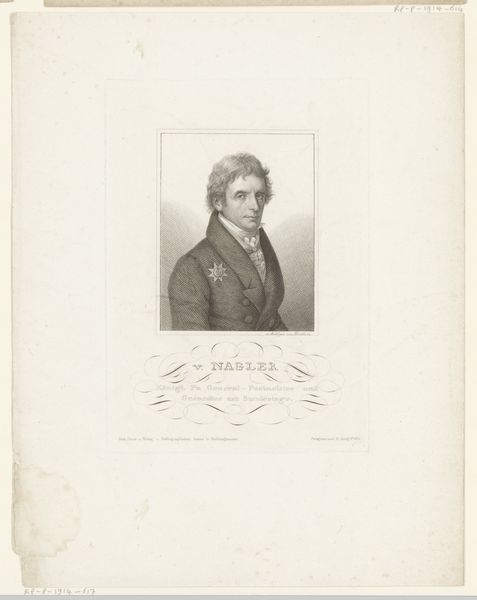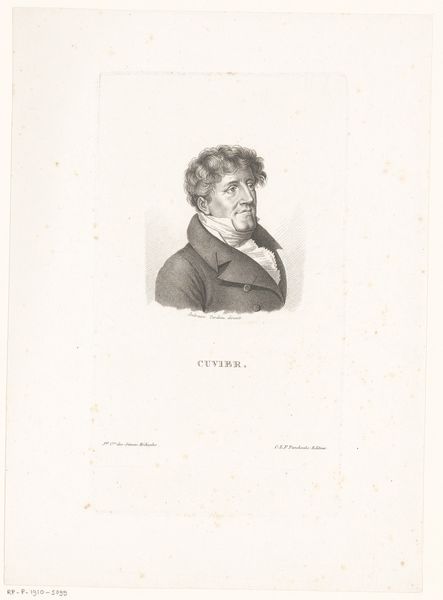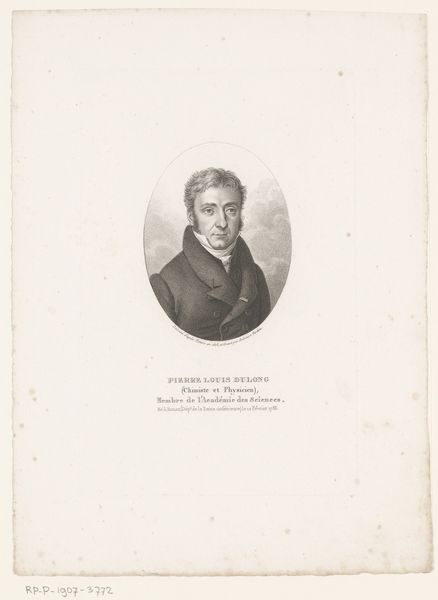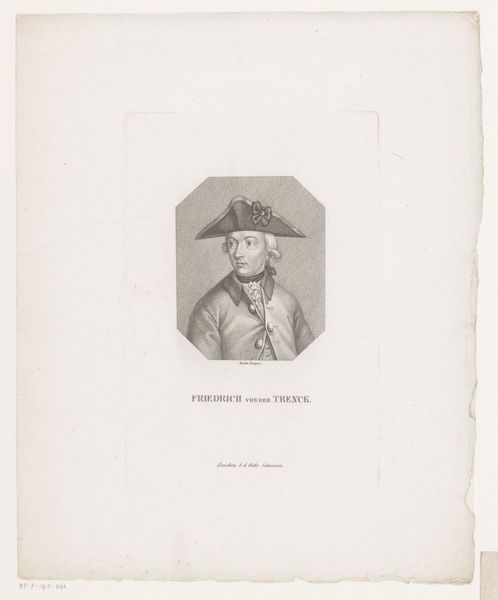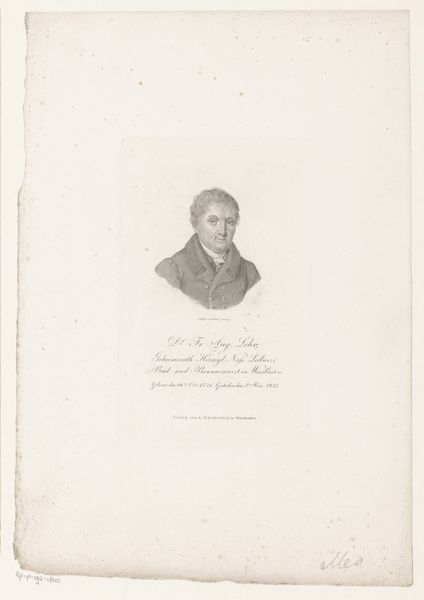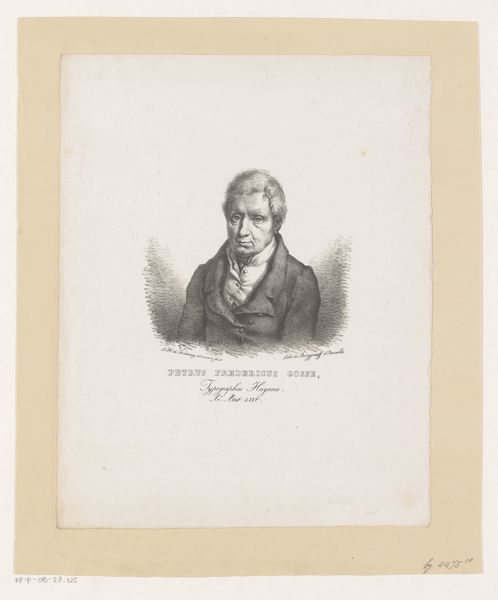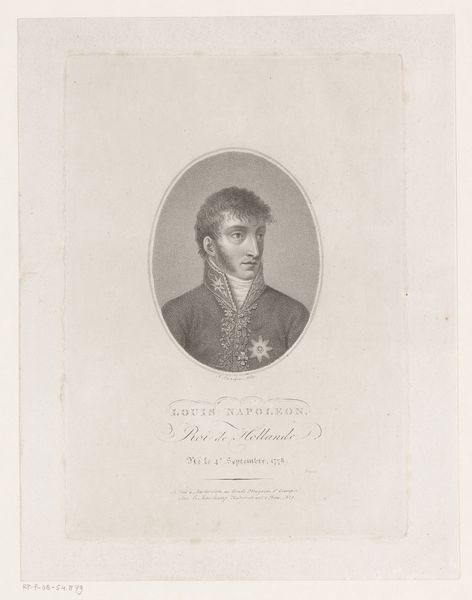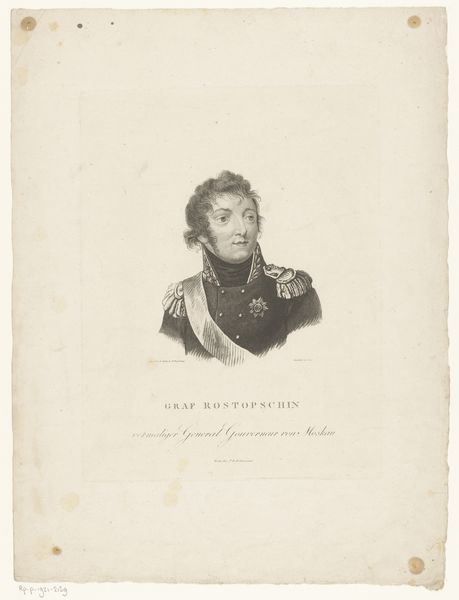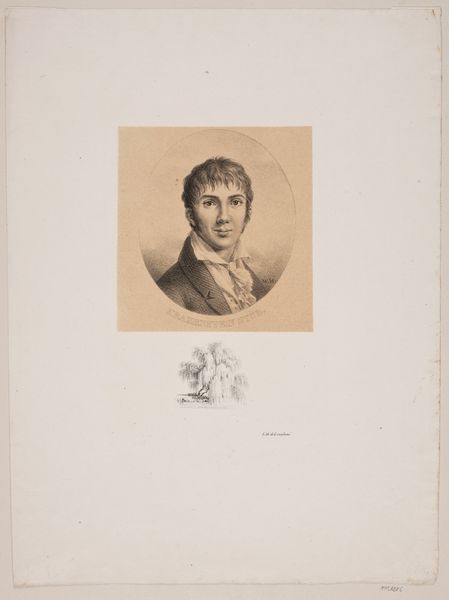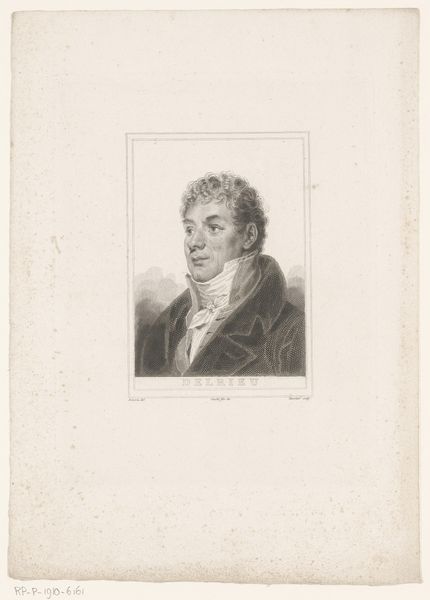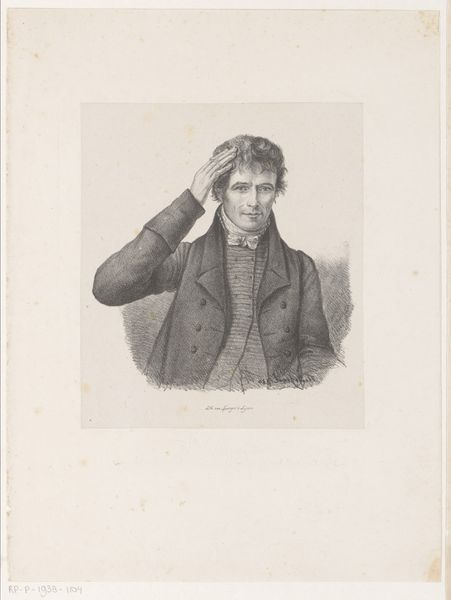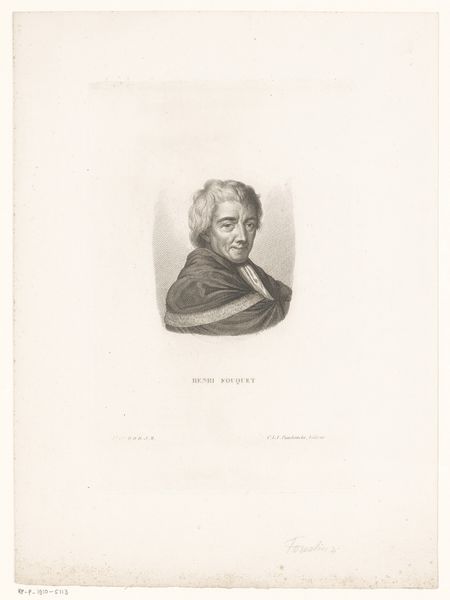
#
pencil drawn
#
light pencil work
#
pencil sketch
#
old engraving style
#
personal sketchbook
#
ink colored
#
sketchbook drawing
#
pencil work
#
watercolour illustration
#
sketchbook art
Dimensions: height 245 mm, width 144 mm
Copyright: Rijks Museum: Open Domain
Editor: This is François Louis Couché's "Portrait of Pierre François Charles Augereau," dating roughly from 1816 to 1849. It looks like pencil on paper. It has such a delicate quality. What do you see in this piece from a materialist perspective? Curator: What interests me here is the accessibility of pencil and paper during the post-Napoleonic era. This wasn't high art in the sense of commissioned oil paintings for the elite. The relative ease of obtaining and working with these materials suggests a shift towards a democratization of portraiture. Consider the labor involved: the artist’s hand meticulously rendering Augereau’s likeness. Does the texture of the paper affect the way the pencil renders shadows? Editor: That's interesting, I didn't consider the democratizing effect. Looking at the marks, I wonder, was this intended as a preliminary sketch for a larger, more "official" work, or was it an end in itself? Could its status as a “lesser” art form, something crafted on humble paper with humble pencil, reflect something about Augereau himself, perhaps a softening of his image after his military career? Curator: Precisely. Think about the paper mills of the time – where were they located? Who worked there? How did the production and distribution of paper impact artistic practice? And regarding its purpose, let's consider the potential for mass reproduction facilitated by engraving based on sketches like this. How might the accessibility of Augereau’s image impact his legacy and popular perception? Editor: So, it's not just about the man in the portrait, but about the entire system of production and consumption surrounding the image. That’s really enlightening. I hadn't thought about portraiture as part of a broader economic landscape. Curator: Indeed. It compels us to think critically about the materials and labor underpinning what we often perceive as purely aesthetic or historical artifacts. We must recognize the influence of the availability and manufacture of those resources in the work. Editor: I’ll never look at a simple pencil sketch the same way again. Curator: That is what a deep dive in history gives us. We see new facets through different viewpoints.
Comments
No comments
Be the first to comment and join the conversation on the ultimate creative platform.
